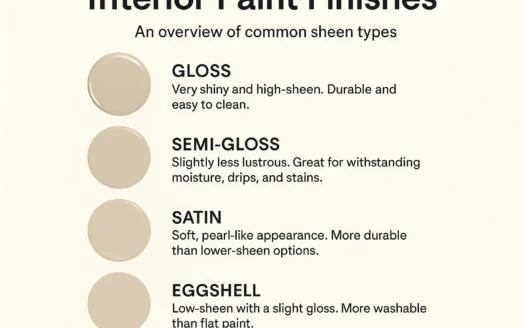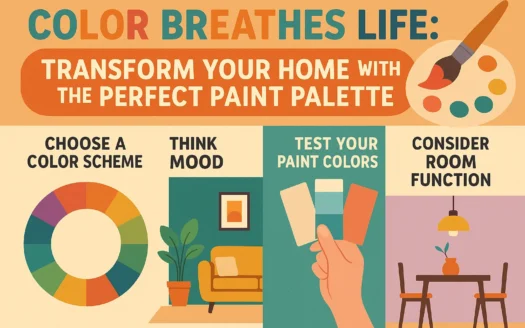Interior Paint Choices

No Decorating Decision Shapes Your Experience of Living in Your House Like Your Choices of Interior Paint Colors and Applications
Between hiring a painter or doing it yourself, choosing colors and types of paint, and then determining which surfaces (floors, walls, ceilings) will get painted, you may feel overwhelmed. Below are some tips to help you make educated decisions and end up with a beautifully painted home that reflects your style, coordinates with your furniture, and lasts for many years.
Hire a Painter or DIY?
If you have high ceilings, a large house, or a time crunch, consider hiring a painter. Angie’s List is one of the best sources of painting contractors because recommendations on the site are genuine and never paid for. Through Angie’s List, you’ll find bonded and insured painters with proven track records in your area. Another option is FreshCoat, a national franchise chain.
Greg Platz, Director of Operations for FreshCoat: “Typically, painting contractors provide broad estimates, not quotes. They often don’t explain what makes up the final price. Is paint included? Is prep included? How long will the job take? Firm, fixed quotes protect everyone involved by setting clear expectations.”
Quotes should include line-item details for each task, such as the number of coats, prep work, and timelines. For smaller homes, budget-friendly projects, or creative applications like stencils or checkerboard floors, DIY might be ideal. Budget ample time to complete the job before moving in.
Consider Low or Zero VOC Paints
Eco-friendly paint reduces exposure to volatile organic compounds (VOCs), which are released as solvents during paint curing. These compounds can harm indoor air quality.
Greg Platz: “Eco-friendly paints greatly reduce fumes and contain far fewer solvents, harmful chemicals, and no oil.”
Look for premium-grade zero-VOC paints with environmental certifications. Avoid products with vinyl, plasticizers, or toxic biocides.
When Choosing Colors, Don’t Fall for Common Misconceptions
- Myth: Small rooms shouldn’t be painted dark colors. Reality: Dark shades create intimacy and coziness.
- Myth: Colored ceilings make rooms feel low. Reality: Colors can add depth and create the illusion of height.
Donna Schroeder, Manager of Color and Design for Sherwin-Williams: “Darker colors aren’t always bad for small spaces. They can enhance the mood you’re trying to achieve.”
Kathryn Marsh, Interior Designer: “Your feelings and moods define the best colors for you. Trends shouldn’t control your choices.”
Where to Look for Inspiration
Draw ideas from fabric, artwork, favorite foods, vacation spots, or even book covers. Consider the mood you want in each room:
- Nature-inspired: Pale greens or blues for sunlit rooms.
- Intimate bedrooms: Deep grays, browns, or blues.
- Playful spaces: Bright hues for children’s rooms.
- Bold experiments: Strong colors in bathrooms.
Kathryn Marsh: “Compare paint samples with fixed elements like furniture, flooring, and fixtures to avoid clashes.”
Choose the Right Finish
- Eggshell: Ideal for kitchens and kids’ rooms (easy to clean).
- Matte: Reduces glare in media rooms.
- Glossy: Enhances evening ambiance in dens with fireplaces.
Personalize Your Walls With Stencils and Special Applications
Modern stencils offer fresh geometric patterns like chevron, herringbone, and polka dots.
Melanie Royals, Royal Design Studio: “Stenciling adds pattern and personality. Homeowners can customize colors to suit their environment.”
Annie Sloan, Decorative Paint Expert: “Painting floors with patterns creates a unique look and personalizes new homes.”




